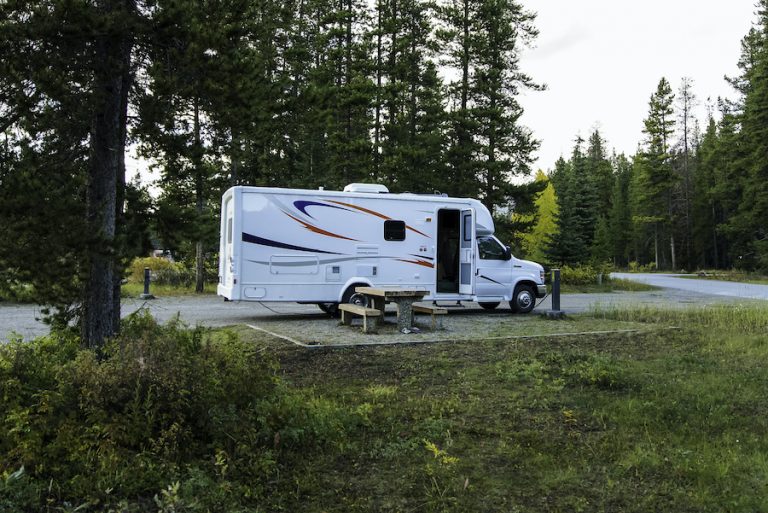Where to Empty RV Waste Tanks? (cost & instructions)
NOTE*** The content on this page may contain affiliate links, we may make a commission. And, as an Amazon Associate, we earn from qualifying purchases. More information: disclosure page.
If you are traveling in an RV, you will soon need to know where to empty your RV waste. As you are using water in your RV it is either going into the gray water tank or the black water tank. The gray water is everything from the showers and sink and the black water contains sewage from the toilet (ie. poop).
Since the black water tank contains sewage from the RV, it will need to be properly disposed of at a dump station or facility that will takes raw sewage. Many private and public places offer disposal services. You can generally find dump stations at RV campgrounds, municipal wastewater treatment plants, gas stations, RV stores and dealerships, rest areas, gas stations, and marinas. Also, if allowed by the city, dump into your own sewer or septic by connecting to the cleanout.
How much does it cost to empty my RV tanks?
Although you can find free places to dump, you will generally pay between $10 to $30 to dump and flush the RV tanks. This fee may include refilling the freshwater tanks as well.
When renting an RV you may have the option of having the owner dump and flush the tanks for a small fee. If you will be boondocking or taking a long road trip where you use the bathroom on the way home, this is an excellent idea.
More on the blog to help you plan your family RV trip:
Public and Private RV Campgrounds with RV Dump Stations

If you are camping in a campsite without sewer hookups the campground will generally offer a dump station to empty your waste tanks. This will not cost extra and be included with the cost of your camping fees.
However, if you are not camping at that campground, they may allow you to dump your waste tank for a separate fee. Generally, you will check in with the camp host and pay the fee of $10 -$30.
Pro tip: State Parks are generally well equipped with dump stations. Try to plan a stop at a State Park with a dump station and enjoy the afternoon at the park.
Interstate Rest Areas with Dump Stations
Some rest areas, welcome centers, and service plazas have RV dump stations but not all do. For example, there are 4 rest areas along I-70 through Colorado that have dump stations.
You will generally find information if dumping is free and a self-pay station if there is a fee.
Gas Stations and Truck Stops
Many large truck stops and some smaller gas stations have dump stations. This is a huge benefit since you will be frequently filling your gas tank on an RV road trip. Pilot and Flying J Travel Centers. When you arrive, park and check-in with the cashier or service person. The cost is generally $10 and you can get a discount with the Flying J card.
Public Dump Stations and Wastewater Treatment Plants
Some towns and counties have dump stations accessible to the public. Frequently, these are located near the wastewater treatment plant.
Fairgrounds
Yes, people camp at fairgrounds for events and some even have very nice campgrounds (we enjoyed the one in Coeur d’Alene). You will need to contact the main office or check-in at the campground.
RV Maintenance and Storage Facilities
Any place that works with RVs is a good bet to find a dump station. Frequently, a maintenance shop will have a dump station that you can use for a fee.
Marinas
Boats and RVs both have waste tanks and many marinas have campgrounds for RVs also. So you will likely find an RV dump station at a marina.
Recycling Centers and Sewage Treatment
A variety of recycling centers and private sewage treatment plants process waste. For example, companies that deliver and clean porta-poties have to dispose of the waste.
Empty in the Sewer or Septic at Home

Where the city and county codes allow, you can empty your black water tank into the sanitary sewer (NOT storm sewer) at your house. You likely have a clean-out just outside your house and can connect at this location.
However, if you have a septic tank be careful not to overload your septic with too much volume to fast.
Now that you have an idea of where you can empty your waste tanks, I’ll answer some frequently asked questions about emptying your waste tanks.
How to Dump Your Sewage Tanks
RVs have holding tanks underneath the body of the vehicle. These tanks contain the freshwater, grey water and black water. The contents are contained inside generally by a gate valve. On the side underneath you will see a two levers, one for grey water and one for blackwater. You will also see a pipe fitting that you connect the separate drain line to.
Make sure you put on your gloves before handling anything in this area. The connect the separate drain hose to the connection under the camper. The other end will connect to the dump station. Once everything is hooked up, you can open the valve by pulling the lever. The black water will flow into the drain for disposal.

Then, take the water line dedicated for flushing the backwater tank (do not use your drinking line and connect that to the side of the RV that indicates black tank flushing connection. This can be slightly confusing, so make sure to read the sign next to the connection. Then turn on the water and let it flow through the tank and out the drain line.
Is there an app for RV dump stations?
The best apps to find RV dump stations are All Stays Pro ($29), RV Dump Stations free), Campendium (free).
Sanidumps.com is a popular website for finding dump stations near me. However, the Sanidumps lite app is not as good as using the website directly.
How do I Empty my Black Water Tank at Home?

You can empty your black water tank at home or into your septic. The easiest way is to connect to the sewer clean out and open the valves to dump the tank. When flushing the tank to clean is make sure to use a dedicated how and not your regular household hose.
How much Does it Cost to Dump a Black Water Tank?
Dumping your black water tank can cost anywhere from Free to $35. Some public campgrounds, waste water treatment plants, rest stops and RV stores will allow free dumping. Private business and campgrounds will charge between $10 -$35 with an average of $20 for dumping the tanks.
Is it Illegal to Dump Black Water on the Ground?
Ewww, blackwater has raw sewage and poop in it. Dumping in the ground is not only gross but illegal. Similarly, dumping black or gray water into the storm sewer is illegal also. The official punishment varies by county and state and you will definitely be subject to public humiliation.
Is it OK to Dump Grey Water on the Ground?
Although the grey water in the holding tank may seem benign, in many places it is actually illegal to dump it on the ground. Your grey water from the shower, bathroom sink, kitchen sink goes into a separate gray water tank, that holds from 10 – 40 gallons. It has soap, grease, food particles, and other things that are bad for the environment and wildlife in large quantities.
Final Thoughts About Dumping the Back Water Tanks
dumping the black water tanks in your RV will be a necessity. Make sure you know how to dump the tanks and where to dump them. Alternatively, if you are renting an RV you could have it delivered and set up or have the owners dump it for you.
More on the blog to help you plan your family RV trip:

Hi, I’m Shauna – Welcome to Family Travel Fever. We are a large family, that was bitten by the travel bug! I take the kids by myself because I don’t mind flying or driving solo with my crew to discover the coolest places.
Sign up for our email list for my best travel tips plus get the family travel planner free.








Thank you